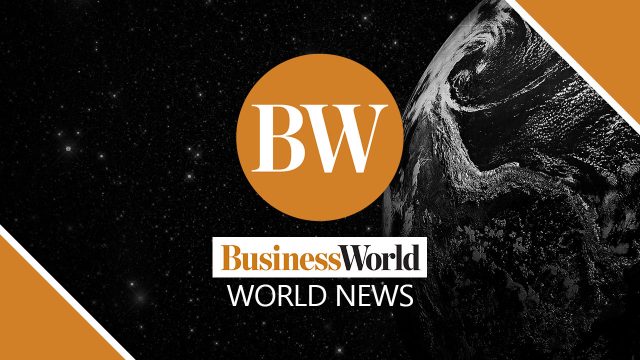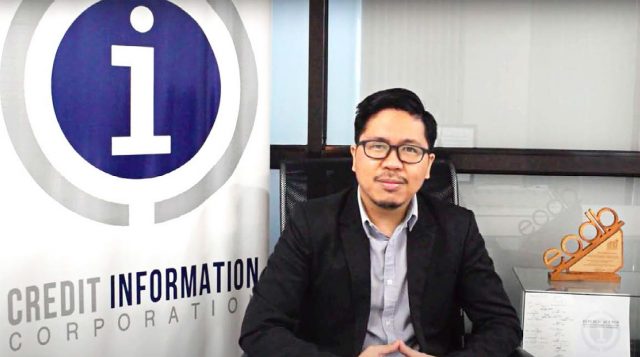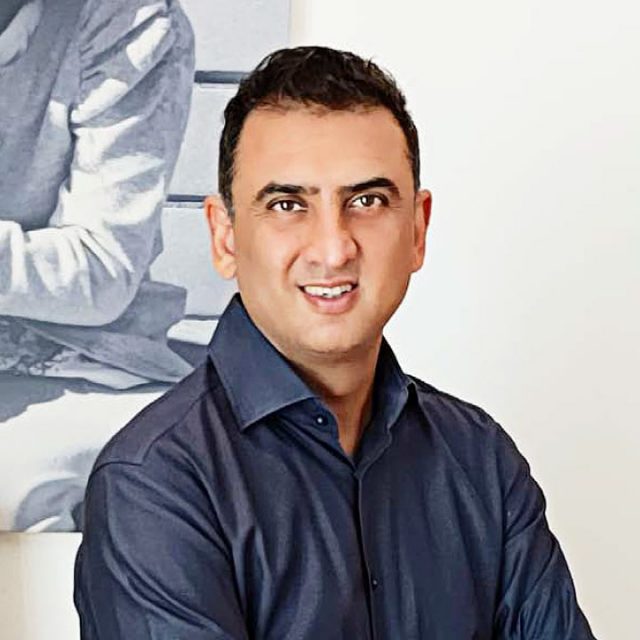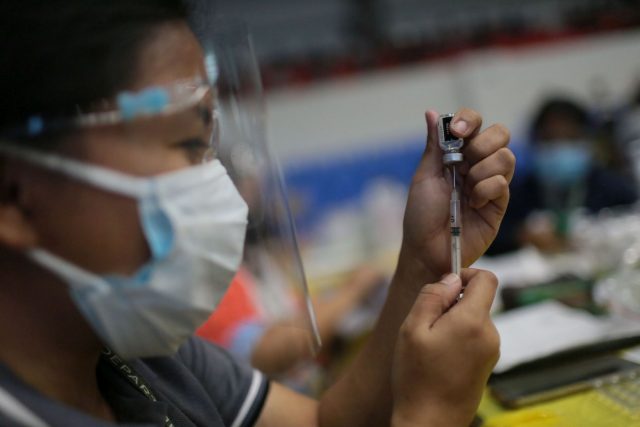It is often said that past performance is not a guarantee of future results. Nevertheless, the credit information that displays payment histories is considered a key ingredient in the financial sector as it helps address the problem of asymmetric information by helping lenders screen borrowers and providing an incentive for borrowers to repay their loans.
Enter the public credit registry and the private credit bureaus.
In the case of the Philippines, the Credit Information Corp. (CIC) was established in 2008 when Congress passed the Credit Information System Act (Republic Act 9510), which mandated the establishment of a centralized credit information system (CIS) to provide a reliable source of borrowers’ credit standing and track record. The state-run public credit registry acts as the central repository of credit information, receiving and collating credit data from “submitting entities” that include banks, quasi-banks, investment houses, cooperatives, micro-financing organizations, credit card companies, insurance firms, and government lending institutions such as the Government Service Insurance System (GSIS).
“[T]he use of credit data becomes more important during the current pandemic since it provides relevant information covering the current and pre-pandemic payment behavior of borrowers. This is especially important to prevent creditors from hesitating to extend loans during this crisis, which has already caused delays in repayment and even defaults,” CIC President and Chief Executive Officer (CEO) Ben Joshua A. Baltazar said.
Latest BSP data showed outstanding loans by the country’s banking system shrank for the eighth straight month in June by 1.8%, albeit this was softer compared with the year-on-year declines observed in the previous months.
Meanwhile, the gross nonperforming loans ratio among banks stood at 4.48% as of June, higher than the 2.57% posted as of June of last year.
Mr. Baltazar said that as of July 2021, the CIS covers the credit data of 28 million borrowers or “unique individuals,” which is roughly 40% of the country’s adult population. Of these, 96,000 are companies.
Moreover, the CIS has around 97 million “contract data” composed primarily of installment transactions with 72.4 million, followed by credit cards with 23.3 million, and non-installment transactions with 1.2 million.
“[T]he CIC database is not just a credit cards-based record. It is a diverse database which includes all types of credit products such as salary loans, housing loans, microloans, business loans, leasing arrangements, and others which illustrate a full picture of the reality of credit behavior in the Philippines,” Mr. Baltazar said.
The CIC’s credit information, Mr. Baltazar said, comes from 606 submitting entities, with over a thousand more still in various stages of onboarding for submission such as registration, testing, and validation.
“We are looking to onboard an additional 100 submitting entities in production and additional 20 accessing entities by the end of the year. We are on pace to hit this target based on our midyear performance,” the CIC official said.
Mr. Baltazar also noted the increasing interest in accessing credit data, as shown in the number of “accessing entities” (AEs), or those that have already complied with the requirements to gain access and use CIC data.
“From zero to 24 AEs by the end of 2019 when CIC first opened the registration for paid phase access, the number tripled to 88 by end of 2020. As of end of July 2021, a total of 122 financial institutions are actually paying and investing to access the CIC database — even amid the pandemic,” he said.
Mr. Baltazar added that there were 437,000 credit reports that are already being used by the AEs for their credit-decisioning activities for the first half of this year alone, compared with 400,000 accessed by these lenders for the entire 2020.
“The continuous increase in the number of onboarded AEs and volume of credit reports accessed by these entities attest to the usability of CIC data,” he said.
One of these entities submitting and accessing credit data from the CIC is the Philippine National Bank (PNB), which uses the data in their credit underwriting process and credit evaluation for their consumer loan accounts business.
“The Bank, being a submitting entity, becomes an enabler as the data it contributes helps build historical credit information. And having access to the credit repository, this provides the Bank with an additional credit tool not necessarily available from other credit agencies,” PNB said.
CREDIT BUREAUS
Aside from the CIC, authorized financial institutions can access borrowers’ credit reports through “special accessing entities” or credit bureaus. As of this writing, the CIC has three such entities: CIBI Information, Inc.; TransUnion Information Solutions, Inc.; and CRIF Philippines.
Mr. Baltazar said these credit bureaus provide value-added services such as credit scoring and portfolio monitoring that allows lenders to monitor existing accounts to assist in determining whether the lines of credit for these accounts be expanded or restricted.
“This is important because it provides lenders a rational basis for their credit-decisioning activities. For credit scoring, it speeds up the process of determining if a borrower is a good credit risk and providing the borrower a solid basis of proof of his creditworthiness. For portfolio monitoring, this empowers the lenders to assess their loan portfolios and better manage their credit risks which have been magnified during this crisis,” Mr. Baltazar explained.
TransUnion President and CEO Pia Arellano said knowing one’s credit score can help in managing personal finances better.
“[The credit score] helps you understand what opportunities and financial services can be of reach to you and can serve you in finding more competitive loan rates provided that you have a good credit score. Conversely, having a low credit score would indicate that there are aspects in your financial behaviors that will need improvement such as timely payments and adjusting your budget,” Ms. Arellano said.
Ms. Arellano said the firm’s most in-demand service is its scoring solution, wherein lenders use their credit reports and scores to help them in their underwriting decision.
“Similarly, TransUnion’s other solutions such as fraud prevention and frequent portfolio review rely on our database to provide even further insights and analytics that will help our clients have a better understanding of their own customer base while balancing risk such as protecting customers from fraudulent transactions,” Ms. Arellano said.
“We have also recently launched our CreditVision score, which uses trended data not typically found in traditional scoring models such as actual payment amounts and utilization trends. This means that CreditVision gives a more complete view of a consumer’s behavior over time so that financial institutions can more accurately extend offers to consumers with low-risk behaviors while managing the changes of behavior of customers in their existing portfolio,” she added.
TransUnion is also set to launch a “new-to-credit score” that, Ms. Arellano said, combines alternative data sources enhanced with TransUnion’s data so that borrowers with no payment history can still be accurately represented and assessed by lenders.
Meanwhile, CIBI President and CEO Marlo R. Cruz mentioned the utilization and promotion of the CIBI Web-App that was launched in October last year as part of its commitment to promote accessibility to the CIC.
“[The app] will the public to remotely request for their respective CIC credit report and score. Aside from access, the Web App facilitated multiple benefits to the CIC like public awareness on the role and an effective channel to promote data quality through transparency and correction of records,” Mr. Cruz said.
Currently, it is possible to request for one’s credit report with the credit score online through its web app version with the app being temporarily unavailable for both Android and iOS users due to the ongoing electronic Know-Your-Customer (eKYC) integration activity.
CIC’s Mr. Baltazar said there was a notable increase in demand following the launch of CIBIApp. “We are expecting another surge once the mobile app is up and running again in the third or fourth quarter of the year,” he said.
CIBI’s Mr. Cruz said that in addition to CIBIApp, its myScore and eKYC flagship credit bureau products will help improve operation efficiency, to heighten customer experience, and to mitigate fraud and risk.
“CIBI’s Credit Scoring Services can assist financial institutions in achieving goals for growth and profitability as it gives a complete view of the business. It also helps lenders in identifying good credit prospects and reduce credit losses in account acquisition, application screening, and account management for consumers,” he said.
CHALLENGES, OPPORTUNITIES, AND OUTLOOK
To further encourage interest and allay concerns on the quality of CIC data, the public credit registry had streamlined the onboarding process and implemented reforms such as the “Data Quality and Usability Assessment” (DQUA) initiative to ensure the “adequacy, accuracy, and usability” of the submitted credit data, CIC’s Mr. Baltazar said.
He explained the DQUA was in response to a 2020 study by US-based think tank Policy and Economic Research Council and the Makati Business Club which noted underscored the importance of proper management of data quality in developing an effective credit reporting system.
“Through the DQUA, potential AEs and current AEs, assisted by their special accessing entity of choice, may access up to 10,000 credit reports, free of charge, for the purpose of generating statistics and analytics which will provide them visibility on the usability of their data,” he said.
“While the data submitted by the potential AEs are already subjected to a completeness and periodicity standard, the DQUA will subject the submitted data already processed by CIC to further analysis focusing on data quality and usability metrics. The process must be completed before a potential AE becomes an accessing entity,” he added.
As for opportunities, Mr. Baltazar pointed to a new pricing scheme that came into effect on Aug. 1 wherein credit report inquiries will have a wholesale price of P10 each when financial institutions pre-purchase a million reports annually, and a retail price of P15 per report for all other attempts to access the CIC database. Basic credit reports purchased under either price will have an expiration date of eighteen (18) months from the date of purchase.
“[The new pricing scheme] is implemented for the purpose of maintaining financial inclusivity while providing incentives to drive volume consumption of the CIC basic credit reports. This is also intended to sustain CIC’s operations to ensure that a high quality of service is provided to its users,” he said.
Alongside this new pricing scheme is the implementation of a “No Hit, No Pay” policy where all types of credit report inquiries will not be charged if the result is a “No Hit.” The latter tag happens if either the said data subject does not have a credit exposure or footprint yet, or the financial institution that the data subject is transacting with is yet to submit actual data of their borrowers to the CIC database.
“This initiative offers more flexible and competitive options for our financial institutions — big or small — to review loan applications and properly manage investment risks through the CIC Credit Report which provides a comprehensive and a more balanced view of a borrower’s credit behavior. This, I believe, is one of the CIC’s significant contributions to the economy as we try to bounce back from the devastating effects of the pandemic,” he said.
“For our key targets, we are hoping to achieve at least three million accessed credit reports and a total revenue of P37 million by the end of the year.”
Meanwhile, TransUnion is currently augmenting their direct-to-consumer platform that will allow more consumers to request for their credit reports, Ms. Arellano said.
“These credit reports provide consumers with information and knowledge about their total accounts to date and reviewing such is essential to ensure they are accurately being represented in the marketplace so that they have access to financial services and opportunities,” she said.
“We are also developing a premium credit report that combines both TransUnion and CIC data to give both our members and consumers a more comprehensive view of their account history to date,” she added.
For CIBI’s Mr. Cruz, this year marks the road to recovery in regaining consumer trust, confidence, and demand to pre-pandemic levels.
“To capitalize on CIC’s current initiatives in improving data coverage and quality, CIBI would embark on developing new services to further elevate the value of the CIC credit report and to better service its clients,” he said.
As a submitting and accessing entity of these credit data, PNB would like to see other consumer-related transactions such as utility companies and government agencies be uploaded in the CIC database.
“These would definitely be beneficial for credit underwriting purposes particularly for those who have very limited credit history or just starting up. Furthermore, for easy referencing, the names of the contributing financial institution may possibly be disclosed,” PNB said.
Moving forward, Mr. Baltazar believes the CIC will have a “stronger role to play” in the so-called new normal as the information it holds was contemplated to improve the management of credit risks that have been magnified during the pandemic.
“For starters, the CIC database can directly help micro, small, and medium enterprises (MSMEs) cope with the financial challenges of their business during and even beyond this unprecedented crisis… They can receive a credit score from the [credit bureaus] that have access to our database in order to bolster their applications for business loans,” he said.
Mr. Baltazar added the CIC is also promoting the benefits of access to their database in order to help lenders manage their portfolio of bad loans while encouraging new creation of loans for creditworthy borrowers.
“Access to credit history will prevent them from lending to those with high default risks, and at the same time, reward those with good credit standing, hence removing information asymmetry and promoting fair pricing of loans,” he said.
“This will likewise benefit the borrowers in a sense that their non-payments during the grace periods under the Bayanihan Acts — which should not be reflected in their credit reports — will not be taken against them.” — Bernadette Therese M. Gadon









